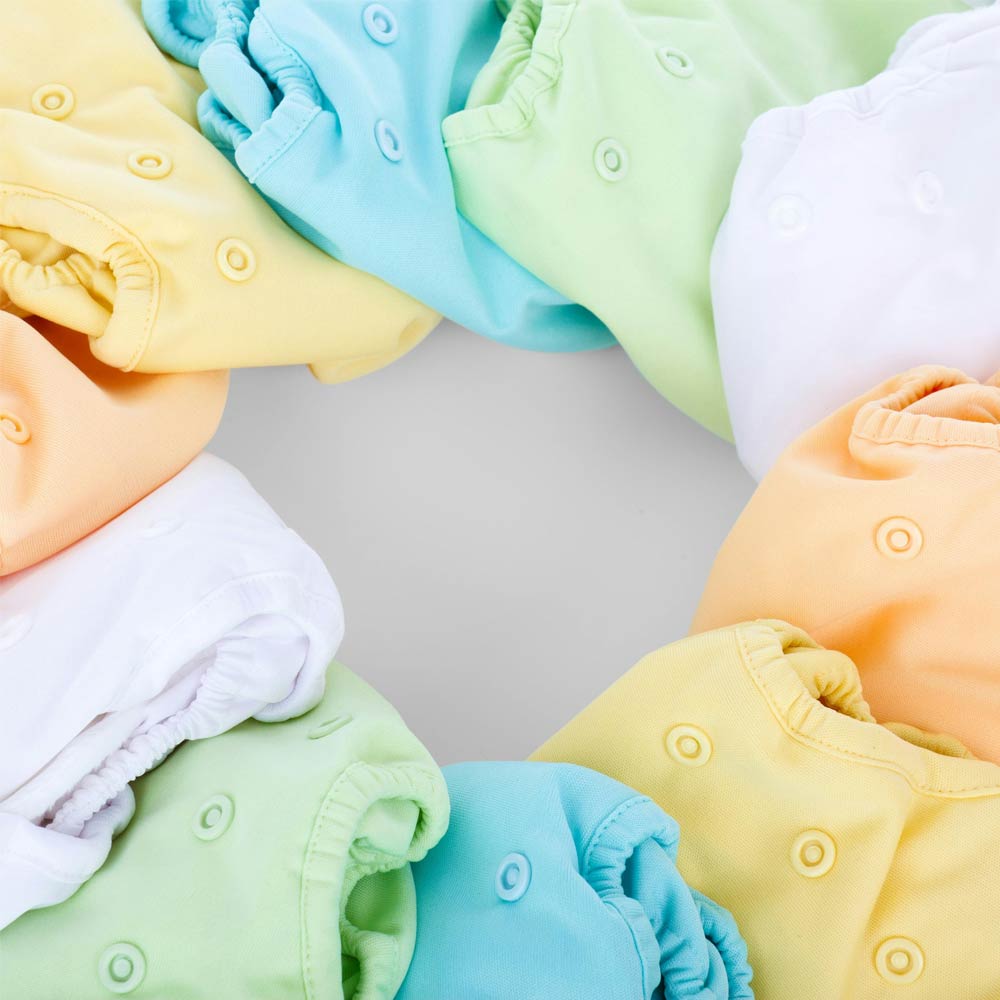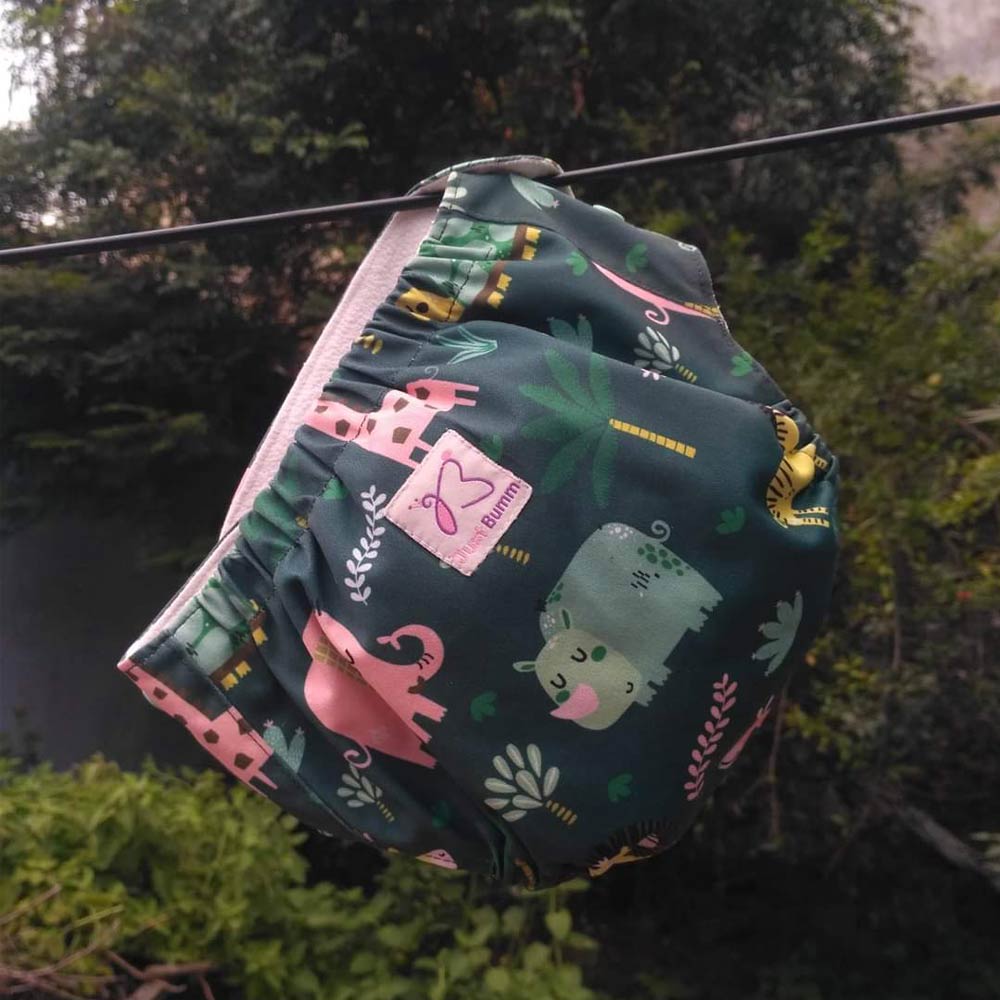
There are many factors to consider when choosing cloth diapers, but absorbency and material are two of the most important. Here's a breakdown to help you pick the perfect cloth diapers for your little one.
Absorbency:
The number of layers a cloth diaper needs depends on your baby's wetting habits.
- Light wetters: A single insert might suffice. It should at least have 8 layers.
- Moderate wetters: 8-12 Layers are ideal for good absorbency.
- Heavy wetters: Consider cloth diapers with additional booster pads for day and nighttime changes. Up to 20 layers will give a good absorbency.
Material Matters:
Natural Fibers: Opt for natural fibers like organic cotton and hemp. These are highly absorbent, breathable, and gentle on your baby's skin.
Why Synthetics Aren't Ideal:
Microfiber: Though absorbs quickly, microfiber even with more number of layers leaks easily due to compression leaks.
Bamboo Cotton/Bamboo: Bamboo is a synthetic material. While it is as soft as cotton, the absorbency & shelf life of the material is not great. You will face more wear and tears.
Charcoal Bamboo: Charcoal Bamboo is just microfiber & does not have a good absorbency power.
Modal: While modal is a great alternative to cotton for inner garments, it is not suitable to serve as a core material for cloth diapers.
Synthetic materials are less breathable and hence not suitable to be used in Cloth Diapers.
Cotton Vs Bamboo Vs Microfiber:
| Material | Absorbency | No of Layers |
| Hemp + Cotton Blend | Very High | 4 |
| Organic Cotton | Relatively High | 8 |
| Bamboo | Good | 8 |
| Microfiber | Moderate | 8 |
As you can see, natural fibers like organic cotton and hemp reign supreme for absorbency and breathability. Hemp & Cotton, in particular, offers superior absorbency while remaining trim and comfortable for your baby. Just Bumm Cloth Diapers offers both Cotton & Hemp combos for ultra-absorbent cloth diapers for babies.
Breathability:
The breathability of a diaper is measured by its Moisture Vapor Transmission Rate (MVTR). MVTR indicates how much moisture vapor can escape the diaper in a specific amount of time. Higher MVTR signifies greater breathability.
Many leading disposable brands fail to pass this MVTR test and are likely not breathable due to the plastic sheets present in them. Just Bumm Cloth diapers have a very high MVTR and regulates air flow preventing rashes!
Diapers Needed Per Day (Estimated):
| Age Group | Diaper Changes Per day | Notes |
| Newborn (0-3 months) | 8-12 | Babies pee more frequently and in less quantity. |
| Infant (4-6 months) | 7-10 | Babies pee frequently in relatively more quantity than newborns |
| Infant (7-12 months) | 5-7 | Solids are introduced. Babies pee less frequently in more quantity. |
| Toddlers (12-27 months) | 4-6 | Toddlers post 2 years begin to wet less frequently as they get ready for potty training. They start developing bladder control. |
Tips:
- These are averages, and individual babies may need more or fewer diaper changes.
- Diaper needs can vary depending on factors like feeding frequency, type of milk consumed, and health conditions.
- This table focuses on daytime changes. Nighttime changes may require a separate diaper with higher absorbency.
- Track your baby's diaper habits like wetting pattern & frequency using langots or nappies during the initial stages. And then stock up on cloth diapers as per the need.
Choose a cloth diaper that is made of natural materials like cotton & hemp. The outer material should be very breathable to prevent rashes. Natural fibers provide more absorbency and longer shelf life so you can reduce and save more on your stash!



Leave a comment
All comments are moderated before being published.
This site is protected by hCaptcha and the hCaptcha Privacy Policy and Terms of Service apply.